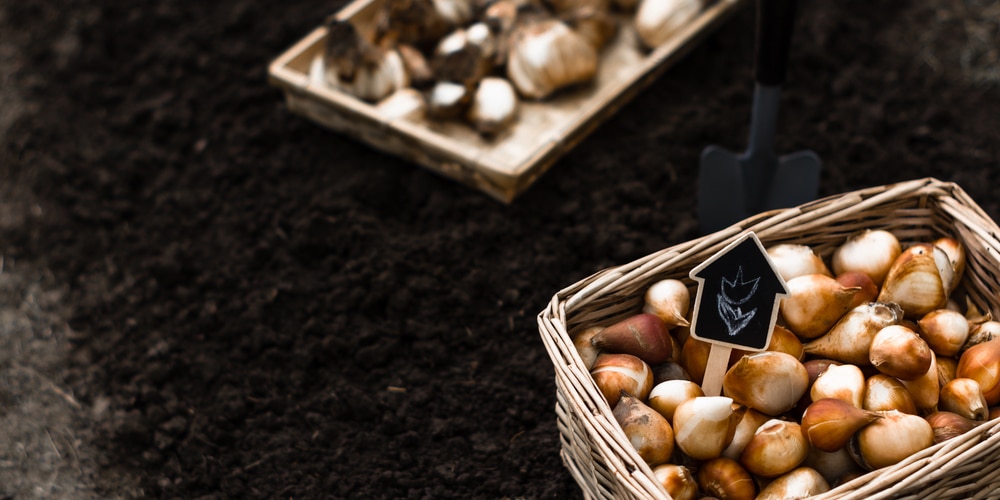Daffodil bulbs are generally considered hardy. However, for daffodil farmers living in the extreme south and extreme north USDA planting zones, daffodil bulbs may not be able to endure the harsh conditions without going bad. That’s when curing daffodil bulbs becomes handy.
At its core, curing is the process of storing daffodil bulbs during the off-season as you prepare them to be planted in the next season. The approach is equally important and useful if you wish to replant the daffodil bulbs in another location.
Cured daffodils usually produce well when planted in the next season, unlike those bulbs that were left in the soil over winter. This article will cover more details on storing daffodil bulbs for the next planting season.
Digging and storing daffodil bulbs in the off-season

If you wish to have your daffodils bloom effectively in the next season, here are a few steps to follow when storing them for the next planting time
1. Dig out the bulbs when the leaves are dead
After blooming, leave the daffodils in the ground until their leaves turn yellow before you scoop the bulbs from the ground. Otherwise, they may not rebuild the energy they need to bloom well in the coming season. Yellow or dried leaves signify that the daffodils are mature and have collected enough energy to help the sprout and mature effectively in the next season.
In most planting zones, the daffodil leaves dry up within six weeks after the flower dies. Do not initiate leaf drying; instead, let the leaves dry on their own so that they collect sufficient food for the next bloom.
2. Remove the bulbs from the roots
Daffodils usually naturalize, so it is not uncommon to get several daffodil bulbs in one root clump. You can shake the clump to remove soil and see every single bulb within the clump.
Once everything is clearly visible, carefully separate the bulbs and keep them away from direct sunlight immediately after separation because they might get damaged or start flowering at an early stage.
3. Sort the bulbs
Sorting is mainly done to remove any bulbs with infections. Daffodil bulbs are relatively robust and firm. When sorting, if you notice any brownish or soft bulb, then remove it because it might be infected with a fungus or simply “bulb rot”.
Infected bulbs should not be planted because they rarely bloom, and if they do, then it is usually earlier than expected. Mark the areas that produced infected bulbs and avoid replanting in such areas because they may also be infected.
4. Trim off the roots and dry the bulbs
To avoid early growth, trim off the roots on the bulbs using pruning shears. All you need is to hold the shears at the point where the roots meet with the bulb and cut off the roots. Put the bulbs on a tray and expose them to sunlight for at least 24 hours to avoid fungal development during storage. Always keep the bulbs in a cool, dry place where they are not able to absorb any moisture.
5. Put the bulbs inside a well-labeled opaque paper bag
Daffodil bulbs should always be stored in opaque paper bags or containers. The good thing with an opaque bag is that it helps prevent light from reaching the bulbs, ultimately preventing early sprouting. You can leave the bag open, or more preferably, cut several holes on the bag that will enhance airflow within the bulbs.
Notably, while you can also use a netted bag to store the bulbs but remember, it will allow light to reach the bulbs, so not preferred.
6. Store for 6-8 weeks
Daffodils should be stored in a cool and dry place with temperatures ranging from 16 degrees Celsius to 18 degrees Celsius. The temperature of the storage location should not drop below the freezing levels; otherwise, the bulbs will die.
Some of the best places to store bulbs in a home are the basement, garage, cellar, or inside the fridge if you live in extremely hot regions.
7. Store the bulbs away from fruits
If you opt to store the bulbs in a fridge, make sure they are not near fruits; in fact, it is advisable to store fruits in a different fridge. This is because some fruits produce harmful ethylene gas that can kill the flowers within the bulbs
How to store daffodil bulbs for next year: Conclusion
With the above storage tips, your daffodil bulbs will be safe and ready to be planted in the next fall.
Related Article: Can Bulbs Survive in USDA Hardiness Zone 9?
